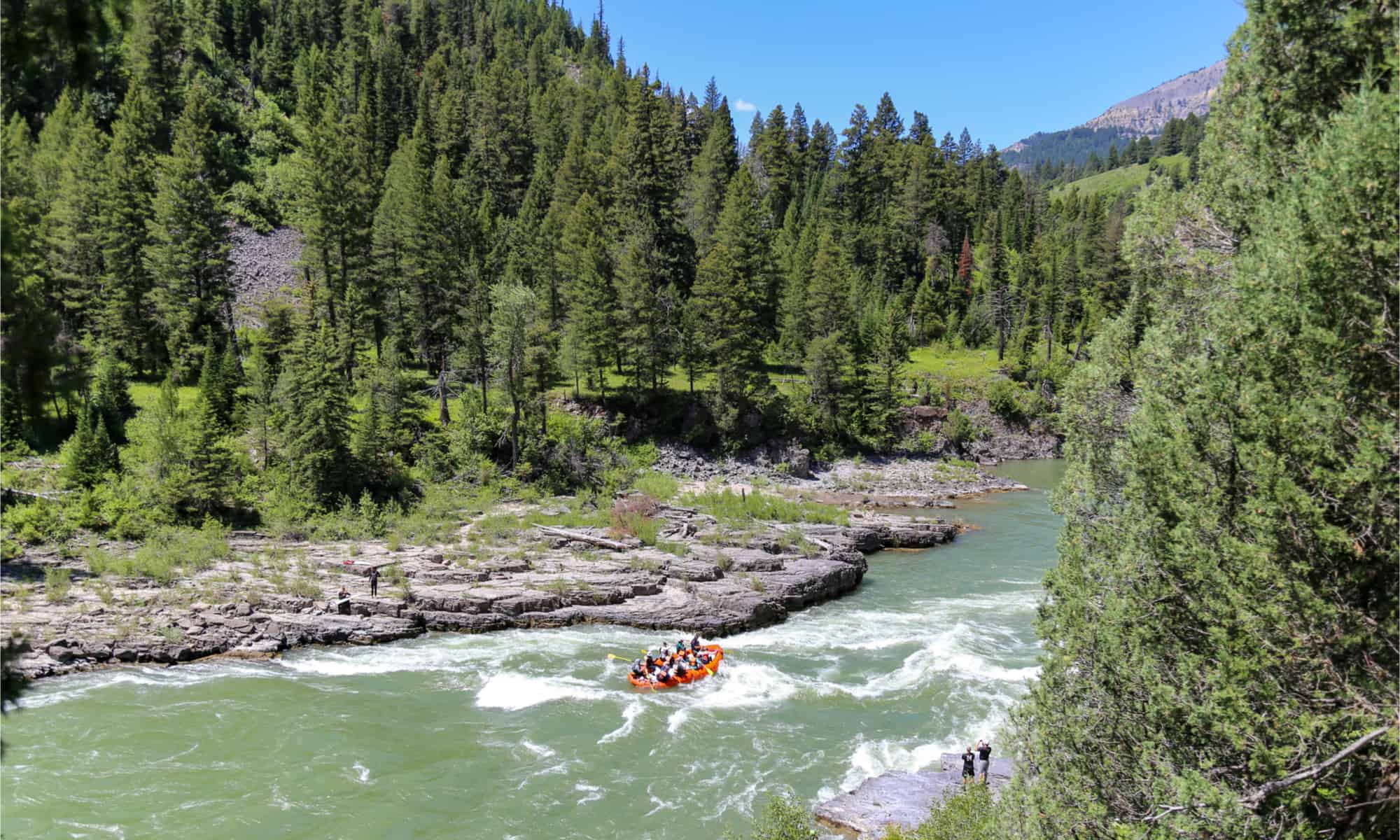
The state of Idaho may be known for its potatoes, but it is also a hidden gem for fly fishing enthusiasts. Idaho offers some of the most pristine and diverse river systems in the country.
Whether you’re a seasoned angler or a novice looking to try your hand at fly fishing, the rivers of Idaho have something for everyone. And for those seeking the ultimate fly fishing experience, there’s even a world-renowned trout spot within the state’s borders.
So grab your fly rod, pack your waders, and get ready to discover the top rivers in Idaho for fly fishing, including the world’s best trout spot.
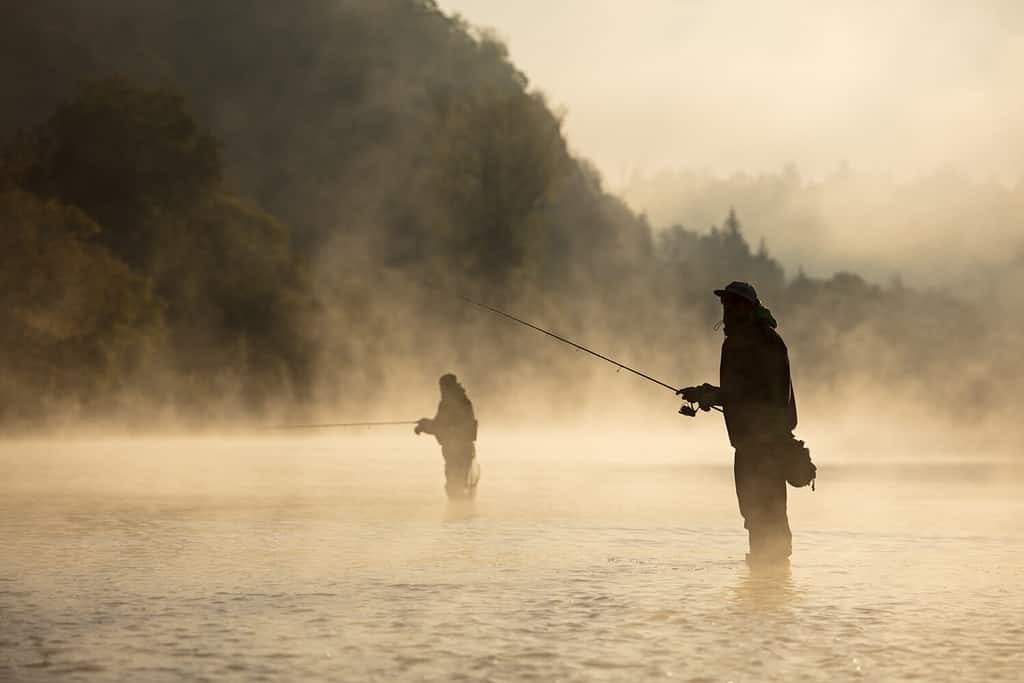
Fly fishing is a type of fishing that involves casting a lightweight artificial fly onto the surface of the water using a specialized reel, rod, and weighted line.
©Lukas Gojda/Shutterstock.com
What Is Fly Fishing?
Fly fishing is a type of fishing that involves casting a lightweight artificial fly onto the surface of the water using a specialized reel, rod, and weighted line. Unlike traditional fishing methods, which rely on bait or lures to attract fish, fly fishing relies on the angler’s ability to mimic the natural movements of insects or other prey that fish feed on.
1. South Fork Boise River
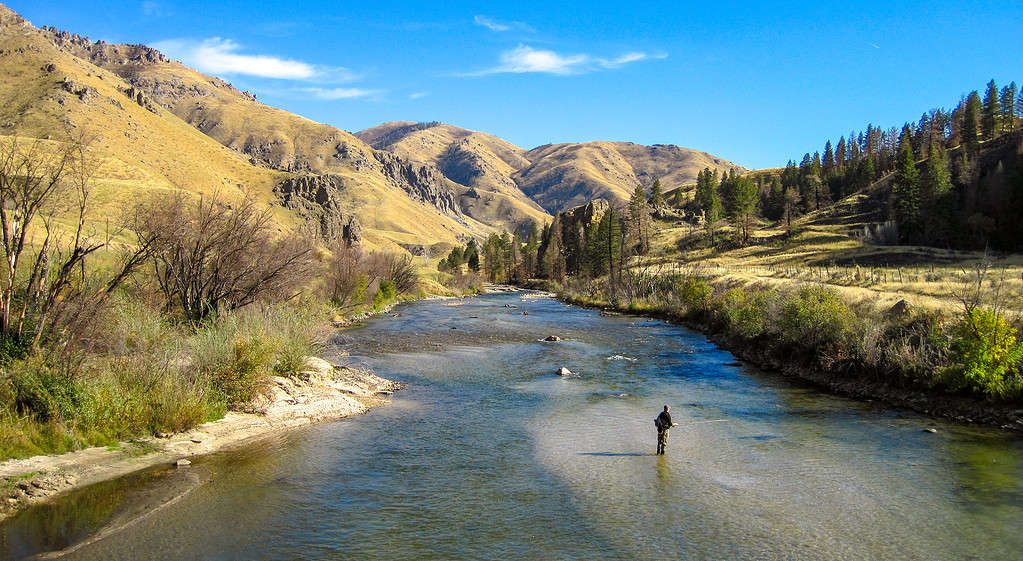
Today, the river is used for irrigation and hydroelectricity, with dams forming mountain reservoirs as part of the “Boise Project.”
©CSNafzger/Shutterstock.com
Situated in southern Idaho, the South Fork Boise River may not be a secret to local anglers. It has remained relatively unknown nationally. This part of the river offers a unique fishing experience that is less crowded and more remote.
The river, previously known as Reed’s River, was named after John Reed, a Pacific Fur Company explorer who discovered parts of the river in the early 19th century. Today, the river is used for irrigation and hydroelectricity, with dams forming mountain reservoirs as part of the “Boise Project.”
The South Fork Boise is located about 70 miles east of Boise. It flows through a dry canyon teeming with wildlife, including mule deer, black bears, chukar partridge, rattlesnakes, and ruffed grouse. Unlike other popular fishing spots, the banks of this stream are free of second homes and no-trespassing signs for most of its length. The South Fork is classified as a “governor’s river,” meaning commercial guiding is prohibited. This creates a more secluded and authentic experience for anglers who are seeking solitude and immersion in nature.
Visitors to the South Fork Boise can enjoy fishing without feeling crowded, pitching a tent, parking a trailer without the fear of interruptions, building a fire (as long as seasonal restrictions are followed), or enjoying a drink under the stars without being disturbed.
Types Of Fish
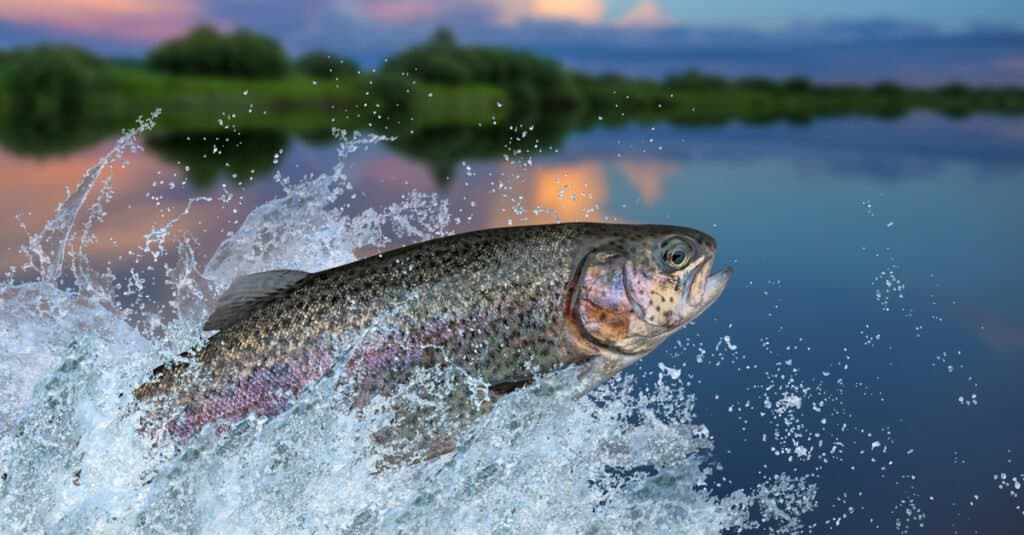
This part of the river is home to a stable population of various fish species, including Rainbow trout.
©FedBul/Shutterstock.com
This part of the river is home to a stable population of various fish species, including whitefish, bull trout, and rainbow trout. This particular river is highly regarded as one of the premier blue-ribbon trout streams in the state.
The South Fork is known for its heavily spotted and brightly colored rainbow trout, which feed consistently on abundant stoneflies, caddis hatches, and mayflies. In recent years, anglers have reported catching more big trout over 20 inches long, previously considered a rare occurrence.
Best Spot For Fly Fishing
For the best fly fishing in the South Fork Boise River, head to the 16-mile stretch between Danskin Bridge and Neal Bridge.
The 10-mile section near Anderson Ranch Dam is crowded with anglers. However, the roadless area between the two bridges is underfished and home to big trout. Launch your raft at Danskin Bridge, check water levels, and enjoy a peaceful day on the river as you cast your line
2. North Fork Coeur D’Alene River

This river offers emerald waters and an abundance of cutthroat trout.
©Mitchell Ulmer/Shutterstock.com
Flowing through the picturesque Silver Valley in Idaho, the North Fork of the Coeur d’Alene River is a prime destination for guided fly fishing trips. This river offers emerald waters and an abundance of cutthroat trout. Despite its excellent fishing potential, it is often overlooked by non-locals.
Over the years, the North Fork has suffered from environmental damage caused by timber cutting and mining. However, recent efforts have been made to restore the health of the river. This results in a significant improvement in its condition.
The North Fork is a small river with a mix of shallow riffles, deep runs, and pools. Although the trout in this river is not as large as some of the other trout in Idaho, anglers can still have a great day on the river using dry-dropper setups with patterns such as Parachute Adams stimulators and pheasant tails.
The best time to visit the North Fork for fishing is during the summer and fall months. Winter brings heavy snowfall to the region, making fishing challenging for enthusiasts. Despite this, the North Fork remains an excellent location for guided fly fishing trips. It is a must-visit destination for any angler looking for a hidden gem in the Silver Valley.
Types Of Fish
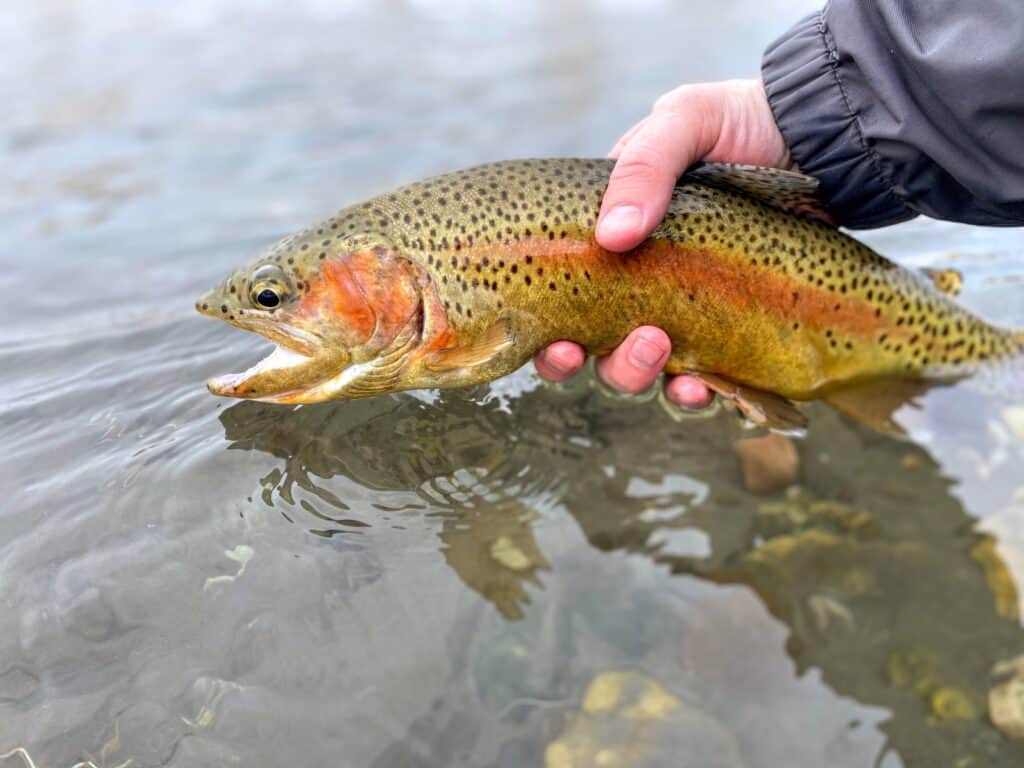
North Fork Coeur D’Alene River is known for its populations of Cutthroat trout.
©Ryan Cuddy/Shutterstock.com
One of the most exciting aspects of fishing in this river is the fact that all fish populations in the area are 100 percent native. Thanks to conservation efforts over the last few decades, fish numbers are strong and healthy, making for an excellent fishing experience.
North Fork Coeur D’Alene River is known for its populations of Cutthroat trout, Westslope cutthroat trout, Brook trout, and Flathead catfish, which are commonly caught in this part of the river.
Best Spot For Fly Fishing
The National Coeur d’Alene Recreational Trail, spanning 15 miles, provides access to the upper section of the North Fork Coeur d’Alene River, renowned for its abundant fish population. The river flows swiftly through rocky pockets, making it an ideal spot for fly fishing enthusiasts. The area above Tepee Creek marks the beginning of this stretch.
For fly fishing lovers, it’s great news that there are “catch-and-release” areas on the Little North Fork, upstream from Laverne Creek, and on the North Fork, upstream from Yellowdog Creek. These areas provide fantastic opportunities for this beloved sport.
3. Henry’s Fork – World’s Best Trout Spot
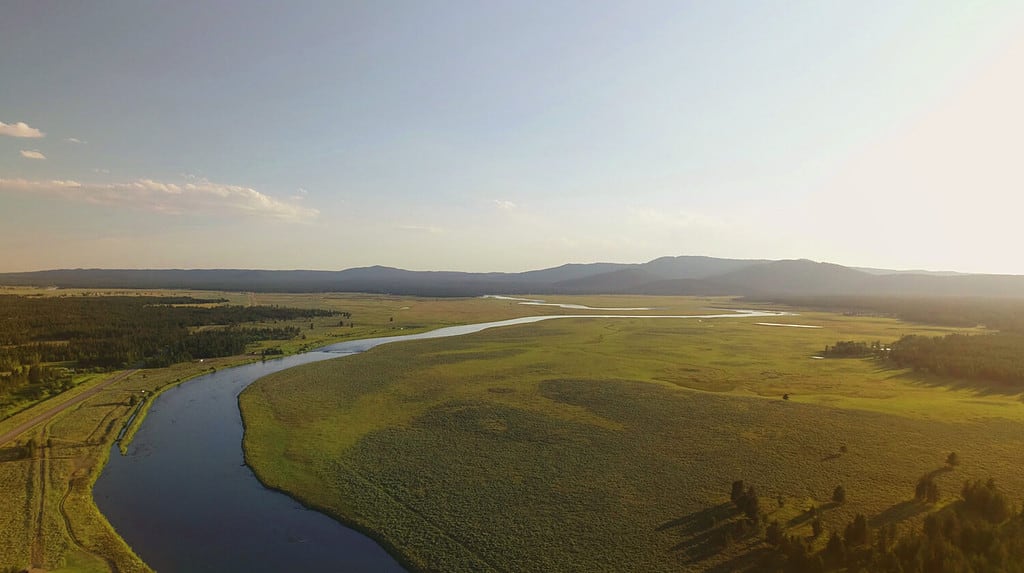
The river prohibits bait fishing and mandates the use of barbless hooks, which adds to the challenge of the sport.
©goodluz/Shutterstock.com
Henry’s Fork is in a remote area of Idaho, with the nearest towns being Idaho Falls and Rexburg. There are no major cities within a few hundred miles of the river.
Also known as the North Fork of the Snake River, it is one of the world’s top trout spots. This is thanks to its abundant large wild rainbow trout and legendary hatches.
Its 150-mile journey showcases classic dry fly water, meandering through gentle flowing meadowlands, pocket water, and spring creek-like sections. Anglers from across the globe flock to Henry’s Fork to test their skills against its diverse and productive waters. This premier trout river has earned worldwide acclaim.
The river’s namesake, Andrew Henry, arrived at the Snake River plateau in 1810. Employed by the Missouri Fur Company, he established Fort Henry near modern St. Anthony on the upper Snake River.
The river prohibits bait fishing and mandates the use of barbless hooks, which adds to the challenge of the sport. The river’s diverse aquatic ecosystem supports a variety of insects. It offers year-round abundance of hatches, making it an ideal destination for anglers.
Types Of Fish
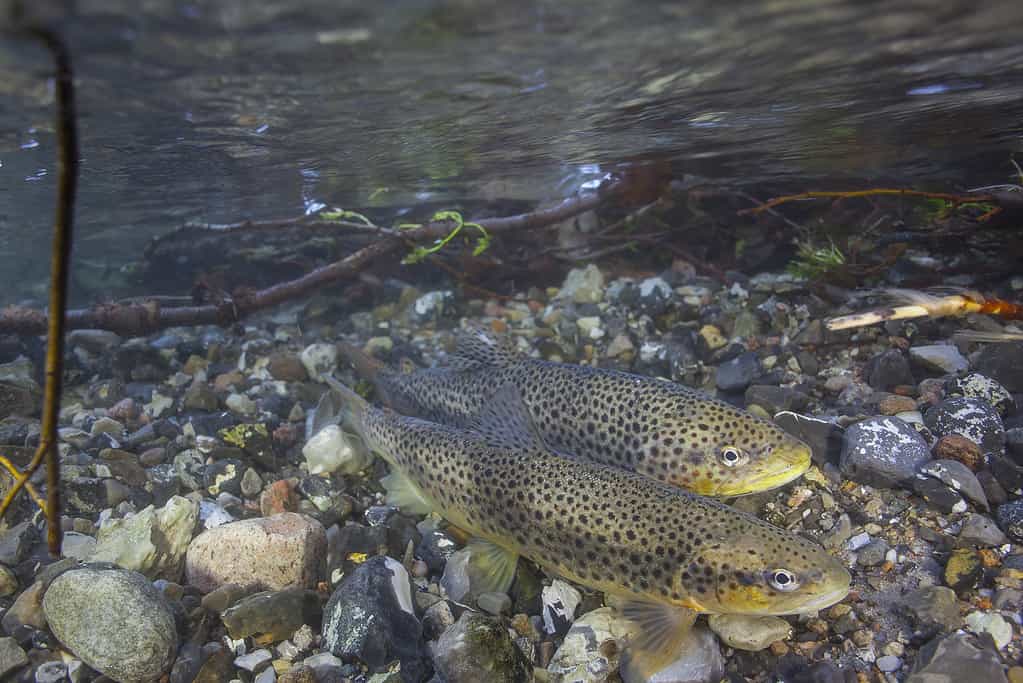
One of the most distinctive features of the Henry’s Fork River is its thriving population of large brown trout.
©iStock.com/DanBachKristensen
One of the most distinctive features of the Henry’s Fork River is its thriving populations of large brown and rainbow trout. Anglers seek out these fish for their size and strength.
Among other fish, you can also find cutthroat trout throughout the river. Brook trout are smaller and inhabit colder, higher-elevation streams. Mountain whitefish are in faster-moving areas of the river. The hybrid cut bow trout is a cross between the cutthroat and rainbow trout.
Best Spot For Fly Fishing
For fly fishing enthusiasts visiting Henry’s Fork, two stretches of the river stand out as the best spots for angling. The first section runs from Box Canyon downstream to St. Anthony. It has multiple dams and highly productive water. Unlike the smaller and more crowded Ranch, this stretch of the river offers ample open water, even during peak season.
The second stretch of the river is the world-famous Ranch, officially called Harriman State Park. It offers an excellent opportunity to catch large trout on dry flies.
4. Salmon River

Human habitation in the Salmon River region dates back at least 8,000 years.
© Intermountain Forest Service, USDA Region 4 Photography / Public Domain – Original / License
The River of No Return is also known as the Salmon River. It is in the western part of the United States in the state of Idaho. It has a lengthy course of 425 miles. The river meanders through central Idaho. It drains a vast and sparsely populated watershed of about 14,000 square miles.
Human habitation in the Salmon River region dates back at least 8,000 years. The area was home to various tribes. This includes the Nez Perce. They considered the river a sacred land and relied on its abundance of salmon and other wildlife for sustenance.
Visitors can indulge in activities such as fly fishing, canoeing, rafting, and whitewater kayaking. They can also marvel at the stunning views of the region’s complex geology, visible through the Salmon River’s canyons.
Types Of Fish

The Salmon River lives up to its name by being one of the few rivers in the state to witness yearly runs of steelhead.
©Sean Lema/Shutterstock.com
The Salmon River lives up to its name by being one of the few rivers in the state to witness yearly runs of steelhead and salmon. It is home to a diverse range of fish species. These include Chinook salmon, brown trout, Atlantic salmon, coho salmon, steelhead, smallmouth rock bass, bass, fall fish, redhorse, white sucker, and shorthead.
Historically, the Salmon River played a crucial role in generating a substantial portion of the steelhead and spring/summer chinook salmon populations within the Columbia River Basin.
Best Spot For Fly Fishing
The Middle Fork of the Salmon River is an unparalleled destination for fly fishing. Offering a diverse range of fly fishing opportunities, it is one of the best spots for fly fishing in the West.
Autumn is the perfect season for fly fishing on the Middle Fork of the Salmon River due to the cooler weather, lower water levels, and slower river flow, which all create ideal conditions for fishing.
5. St. Joe River
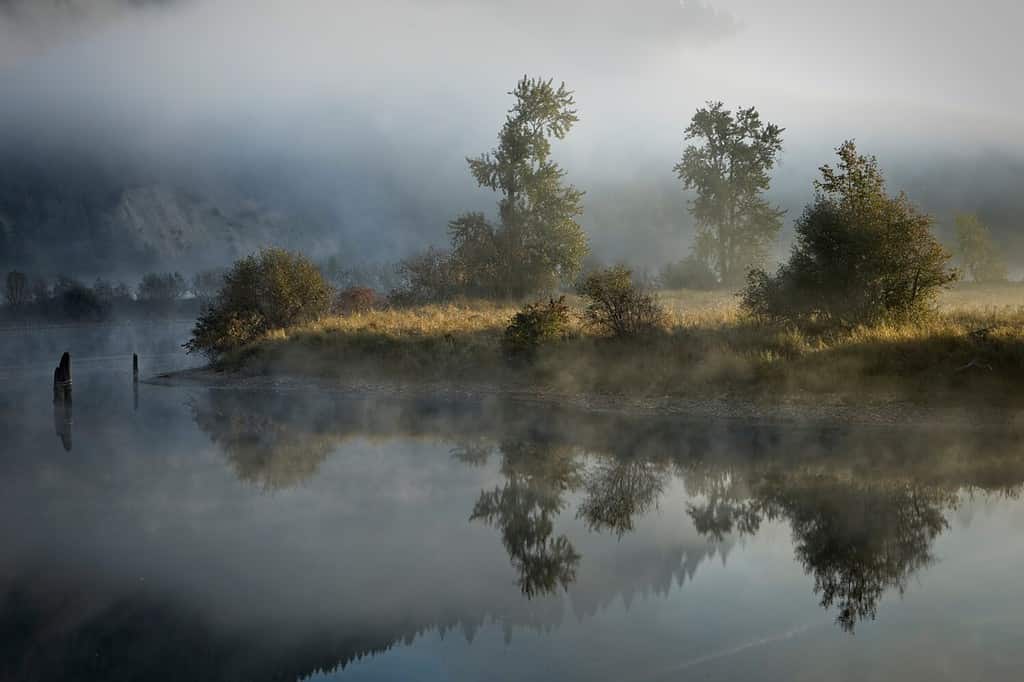
The river attained protection from the National Wild and Scenic Rivers System in 1978.
©Gregory Johnston/Shutterstock.com
The St. Joe River, located in the northern region of Idaho, is a tributary of Coeur d’Alene Lake and spans 140 miles. At an elevation of 2,129 feet, it is the highest navigable river across the globe!
The river attained protection from the National Wild and Scenic Rivers System in 1978. Approximately 66.3 miles (107 km) of its stretch is safeguarded. Among these, 26.6 miles (43 km) have a ”wild” designation. The remaining 39.7 miles (64 km) are recreational.
The stunning St. Joe River has transparent waters, magnificent views, and exceptional catch-and-release fishing possibilities. Not to mention, the ample wildlife that inhabits its surroundings. Along the road of a 39.7-mile stretch of the river, there are several enchanting and cozy small campgrounds to find. An intriguing tidbit of history is that the river was christened “St. Joseph” by a Catholic priest, Father Pierre-Jean Desmet, who established a mission in the area.
Types Of Fish
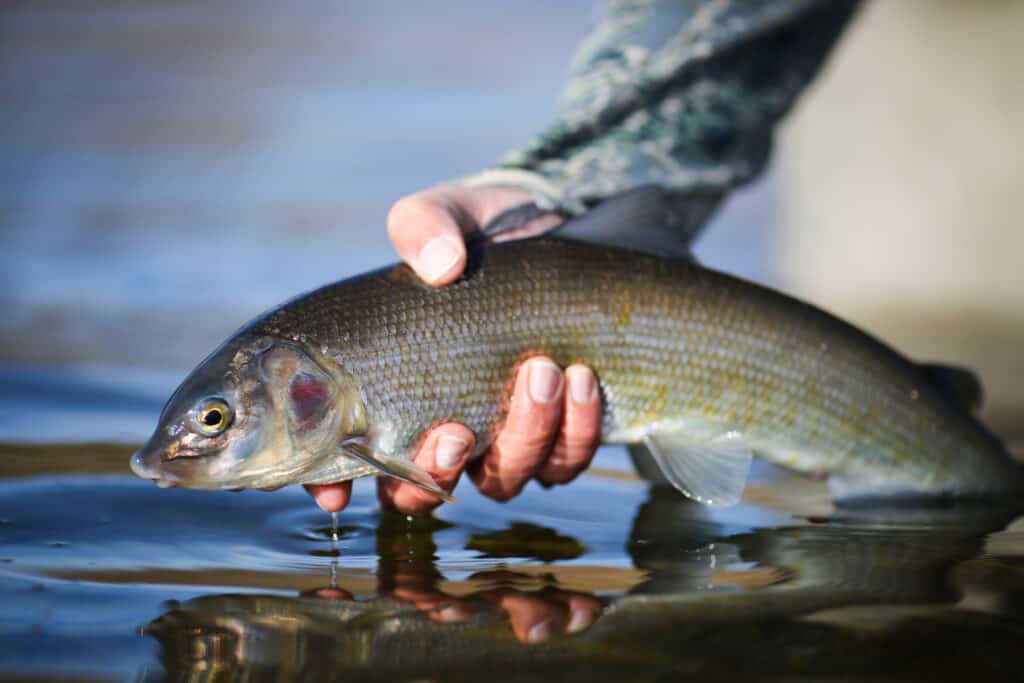
The St. Joe River is home to a variety of fish species, including the mountain whitefish.
©Cannon Colegrove/Shutterstock.com
The St. Joe River is home to a variety of fish species. Anglers can expect to find westslope rainbow trout, cutthroat trout, mountain whitefish, and bull trout in the river. The river’s clear and cool water provides an ideal habitat for these species to thrive. It is one of the best rivers to try fly fishing, spin fishing, or bait fishing to catch these fishes.
The best time for fishing in this river is during the early summer and early fall. The temperatures are reasonable and hot weather has yet to put a damper on the activity.
Best Spot For Fly Fishing
The St. Joe River in Idaho offers an idyllic location for fly fishing enthusiasts. The best area for fly fishing is between Avery’s North Fork of the St. Joe River confluence and Spruce Tree Campground. It covers a distance of 39 miles from where the road ends.
Summary Of The Top Rivers In Idaho For Fly Fishing
| Rank | River | Location |
|---|---|---|
| 1 | South Fork Boise River | Southern Idaho |
| 2 | North Fork Coeur D’Alene River | Silver Valley |
| 3 | Henry’s Fork | nearest towns are Idaho Falls and Rexburg |
| 4 | Salmon River | Central Idaho |
| 5 | St. Joe River | Northern Idaho |
Thank you for reading! Have some feedback for us? Contact the AZ Animals editorial team.

